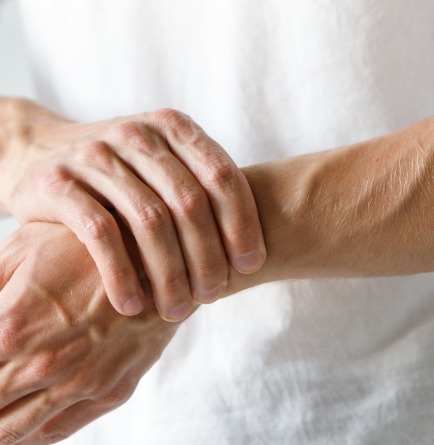Arthritis
The intervertebral discs are little pads that lie between your vertebrae; each disc has a tough outer ring (annular fibrosis) and a soft gel-like center (nucleus pulposi). Your discs separate your vertebrae and, because they’re knitted into the bones, also join them together. They act like little shock absorbers, cushioning the bones so they don’t crash against each other as you walk, which would be very painful. The 23 discs in your spine help give it its curve, flexibility, strength, and length.
There are two types of herniations: protrusions and prolapses. A protrusion can occur if the nucleus pulposi bulges, pushing the annular fibrosis out of shape. A prolapse occurs if the nucleus bulges out so much that it actually separates from the rest of the disc. If the prolapsed disc goes into the spinal cord or puts pressure on nerves, it may cause severe pain that could make sitting, standing, walking, lifting, urinating, defecting, sneezing, coughing & moving nearly impossible. In extreme cases, foot or leg numbness or a loss of muscle control may occur. However, only a small number of those with low back pain have serious disc problems.

There are different forms of arthritis; each has a different cause. The most common form of arthritis, osteoarthritis (degenerative joint disease) is a result of trauma to the joint, infection of the joint, or age. Emerging evidence suggests that abnormal anatomy might contribute to the early development of osteoarthritis[citation needed]. Other arthritis forms are rheumatoid arthritis and psoriatic arthritis, autoimmune diseases in which the body attacks itself. Septic arthritis is caused by joint infection. Gouty arthritis is caused by deposition of uric acid crystals in the joint, causing inflammation. There is also an uncommon form of gout caused by the formation of rhomboid crystals of calcium pyrophosphate. This gout is known as pseudogout.
Rheumatoid arthritis (RA) is a form of arthritis that causes pain, swelling, stiffness and loss of function in your joints. It can affect any joint but is common in the wrist and fingers. More women than men get rheumatoid arthritis. It often starts between ages 25 and 55. You might have the disease for only a short time, or symptoms might come and go. The severe form can last a lifetime. Rheumatoid arthritis is different from osteoarthritis, the common arthritis that often comes with older age. RA can affect body parts besides joints, such as your eyes, mouth and lungs. RA is an autoimmune disease, which means the arthritis results from your immune system attacking your body’s own tissues. No one knows what causes rheumatoid arthritis. Genes, environment and hormones might contribute. Treatments include medicine, lifestyle changes and surgery. These can slow or stop joint damage and reduce pain and swelling.
